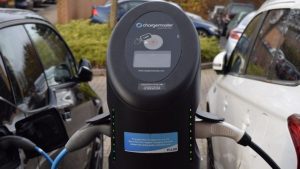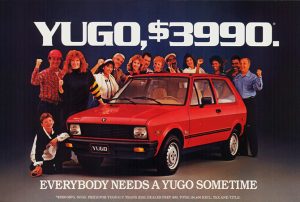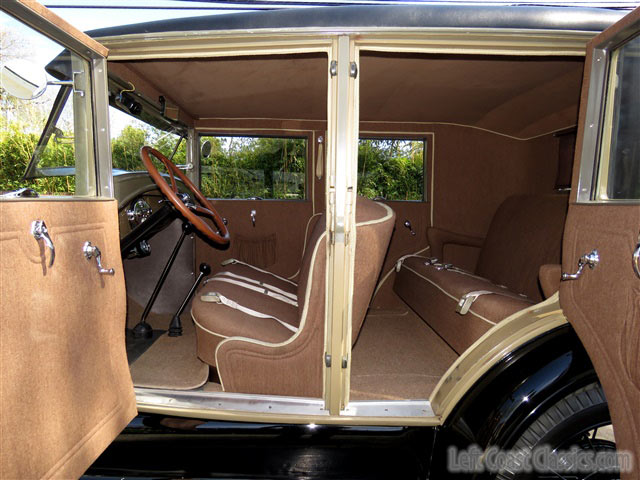Guest Post by Eric Peters

“Electromobility is an excellent fit for our urban, progressive and open minded customers,” says BMW’s Peter Schwarzenbauer.
These being people “open-minded” and “progressive” enough to willingly pay almost twice as much to go a third as far and then wait at least five times as long before they can go less than a third as far, again.
These being the regressions in “mobility” of the just-announced electric version of BMW’s Mini Cooper hardtop – which was an affordable to buy, economical to drive and practical little runabout.
Plug it in – and take all of that away.
Base price: $36,000 – not counting the additional $1,000-$2,000 you’ll have to spend to “fast” charge it at home – vs. $21,900 for the non-electric version of the same thing.
Range: 114 miles, best case – if it’s not too hot or too cold and you don’t drive it too hard – – vs. 300-plus, regardless of conditions, for the non-electric version of the same thing.
Back on the road time: Minimum 30-45 minutes at a “fast” charger to recover 80 percent of the 114 mile range – leaving you about 90 to go before you’ll need to do it again – vs. less than five minutes to recover 100 percent of 300-plus mile range.
Service life: Maybe 8-10 years – after which point, repeated charging/discharging cycles will have eroded the battery pack’s capacity to retain charge, reducing its range to nil, necessitating its replacement at a cost of many thousands of dollars; equivalent to having to replace a non-electric car’s engine every 8-10 years.
Other businesses must be watching this electrified inanity closely. Will “open-minded” ice cream buyers accept paying as much for a pint as they used to for a quart? Maybe it’ll be enough to let them lick the spoon . . . but only after waiting in a 30 minute line.
How about seats in coach – for the price of first? On an airplane with propellers instead of jets – that isn’t pressurized? Fifteen hours, LA to New York, with three stops instead of nonstop.
And no more free stale pretzels and warm soda, either.
It’d be funny, except the joke’s on us.
And not just the EV-addled.
If you’ve gone grocery shopping lately, you’ve probably noticed you’re already paying more for less. Ten ounces of something for the price that used to get you 12 or even 16.
Bigger boxes – with less inside the boxes.
And at home: Toilets that use less water – but which force you to flush more often (using more water). Light bulbs that cost three or four times as much as before, don’t light as brightly and last much less long than we were told they would.
So it follows, logically enough, that instead of paying less for more car, which would be progress – we are now expected to be “open-minded” about functional and economic regression.
About about paying more for less car.
But unlike 10 ounces for the price of 12 – which we have no choice to buy, if we want ounces of anything – economically and functionally regressive electric cars are still items we’re free to not buy.
Yet some “progressive” and “open minded” people do buy them – and many of these very much want everyone else to be forced to by them, too.
A 1985 Yugo is functionally and economically superior to any new electric car.
It listed for $3,995 brand-new back in ’85, which is just under $10,000 in today’s money and so about one-fourth the MSRP of the new electric Mini. It had an 8.5 gallon tank that took less than five minutes to refill and averaged about 38 MPG – which meant it could travel about 300 miles before it needed to stop to refuel.
One needs to be very “open-minded” to accept paying $26,000 more for a car that is incapable of doing what a Yugo could when Ronald Reagan was president and people were renting VHS tapes from Blockbuster.
Regression – presented as “progress.”
A person who spends 40-50 percent more for a car that can only go a third as far as an identical car – and then only if he doesn’t use the AC or the heat much and drives with fingers crossed and a really light foot on the accelerator pedal – and which requires him to wait at least half an hour to recover 80 percent of his third-as-far car’s range and which becomes a throw-away after half the usual time on account of the expense of replacing its major component (the battery) vs. the value of the car itself would – under normal circumstances – be regarded by almost everyone as an imbecile.
But that makes it hard to sell imbecility.
Therefore, it is important to make the imbecile feel good about being an imbecile. To make him feel he is being virtuous by self-impoverishing.
He must believe he is doing the right thing – and far more important, he must be seen by society as doing the right thing. Virtue-signaling is a public act, performed by collectivized approval-seekers.
Sinclair Lewis called them Babbitts. Arthur Miller gave us Willy Loman, desperate to be liked above all. Whatever it took.
It’s the public approbation which counts. Being thought of as . . . correct.
The thing being approved is largely irrelevant. Read about Edward Bernays, who was the first in modern times to consciously organize and deploy the techniques now routinely practiced.
Corporations are just as readily brought into line as individuals – which explains why car executives, may of whom are engineers and not imbeciles, are signaling their virtue just as earnestly by building cars they know are functionally and economically imbecilic by any metric . . . except signaling virtue.
The virtue being signaled, of course, is “concern” for the “environment.”
What this means is not concern for facts about things like vehicle emissions or the actual state of air quality, the abundance of resources – and so on – but rather embracing energy austerity and self-impoverishment, required of us for the sins of affluence and ease – on the basis of tent-show revival hysteria. Secular fire and brimstone this time, none of it pending in actuality but portrayed as luridly imminent to vulnerable rubes by expert evangelists.
Make them sweat and faint; go heavy on the guilt. Then offer them salvation in the form of regression.
The unctuous harangues are delivered almost North Korea-style in their ubiquity; to kids in government-controlled schools and from a mainstream media and cultural entertainment cartel that is controlled North Korea-style by people who want to create a North Korea in America using “concern” for the “environment” – with themselves as Dear Leaders and everyone else walking or riding bicycles.
Which everyone else will have to, once they can no longer afford to drive.
It is my sincere desire to provide readers of this site with the best unbiased information available, and a forum where it can be discussed openly, as our Founders intended. But it is not easy nor inexpensive to do so, especially when those who wish to prevent us from making the truth known, attack us without mercy on all fronts on a daily basis. So each time you visit the site, I would ask that you consider the value that you receive and have received from The Burning Platform and the community of which you are a vital part. I can't do it all alone, and I need your help and support to keep it alive. Please consider contributing an amount commensurate to the value that you receive from this site and community, or even by becoming a sustaining supporter through periodic contributions. [Burning Platform LLC - PO Box 1520 Kulpsville, PA 19443] or Paypal
-----------------------------------------------------
To donate via Stripe, click here.
-----------------------------------------------------
Use promo code ILMF2, and save up to 66% on all MyPillow purchases. (The Burning Platform benefits when you use this promo code.)








Agreed. And where the hell do these people think electricity comes from? Mostly burning coal which is even worse than gas.
eric has been on a tear lately–
In the Brave New World for “…urban, progressive and open minded customers,” as Mr Peters reminds us, less IS more. More inconvenience, more regulation, and always, without exception , more fucking money.
Fantastic article. Buy 1980-90s BMWs while you still can.
I remember seeing a Geo Metro on a car lot, it posted 45 mpg on the sales sticker. I almost bought it and had I done so I would have gotten some value for my money, unlike anything made today.
These electric cars will be much heavier than the already heavy gasoline cars made today. I’m amazed by how little room there is in just about all of the new sedans. In comparison, the old Ford Model A of the late ’20’s to early ’30’s era most certainly has a greater range than any of these new electric cars, less weight, more room, and was a whole lot cheaper. This 1928 Fordor example weighs just under 2400 pounds on a 109″ wheelbase, sold for an inflation-adjusted price of $9100, and look at the leg room in it. There’s certainly no fancy electronics or options, but if a new equivalent had Lockheed brakes, an air conditioner, and taller gearing, I’d consider buying one if the price was around $11,000.

However, I’m sure its existence would offend our Superiors who have been working for the last 55 years on ways to price a car out of reach of their dirty commoners. They certainly want to keep us bottled up in places where they can watch and control us.
We seem to be living in the early stages of “The Marching Morons”.
Is this the result of diminishing IQ?
Drove a Yugo once, and for a deathtrap shitbox, it was actually a fun little car.
To be fair, the Yugo was a piece of shit. But the following year, Toyota came out with a $5998 “workhorse” as they called it (small pickup – no frills), and a Tercel hatchback “EZ” model – no A/C, no radio, no antenna even. I know because we bought one. It was a great car. An antenna cost $18, I installed my own stereo, and we just got by without the A/C. It got 36 or so MPG as I remember, had tires that cost around $30 each (quite narrow), and lasted for us until it hit about 145,000 miles and needed some upper engine work. Being a hatchback with fold-down rear seat, it also carried a ton of stuff.
But there is virtually NO inflation….I know that because the lying sacks of shit in the government tell me so.
I had a 1992 Ford Festiva. 43 MPG and boxy enough to carry just about anything that wasn’t too heavy. The back seat was easy to remove (2 bolts) turning it into a mini cargo hauler. Best shitbox ever.